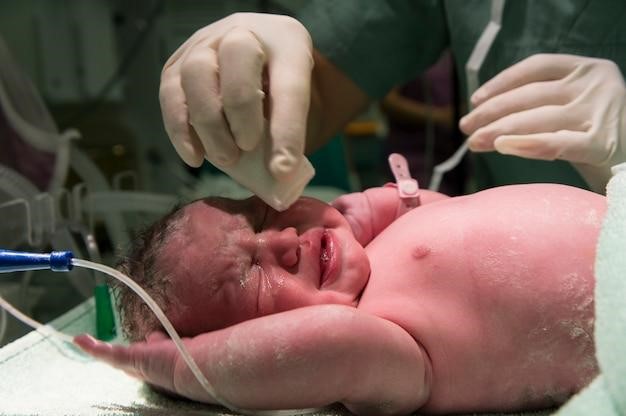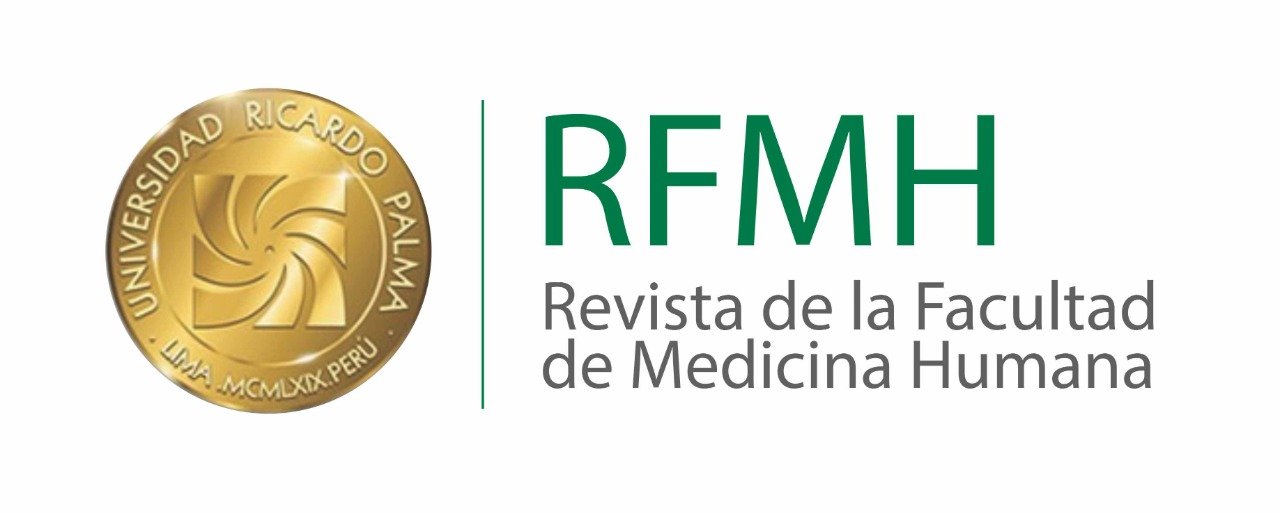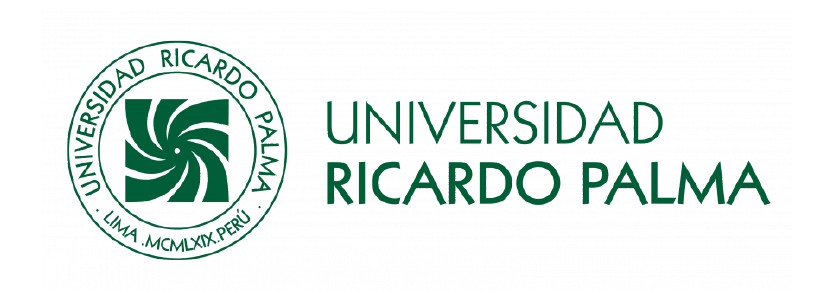Risk factors associated with prolonged hospital stay in Neonatal Intensive Care: a case-control study.
Factores de riesgo asociados a estancia hospitalaria prolongada en Cuidados Intensivos Neonatales: un estudio de casos y controles.
DOI:
https://doi.org/10.25176/RFMH.v23i3.5908Keywords:
length of stay, neonatal disease, neonatal ICU (Source: MeSH – NLM)Abstract
Objective: Identify neonatal pathologies or conditions that influence the prolongation of hospital stay in a Neonatal Intensive Care Unit (NICU).
Materials and methods: An observational, retrospective, case-control study was carried out; in neonates hospitalized in the NICU, during the period 2015-2019, considering their perinatal and postnatal diagnoses as factors to be evaluated, as well as hospital stay. Two groups were divided: cases (prolonged stay) and controls (non-prolonged stay). The collected data were processed in the SPSS v.23 program, obtaining the OR and the Binary Logistic Regression.
Results: 361 neonates (91 cases and 270 controls) were included, finding significance in perinatal factors (p<0.05): Birth weight (1000g to <1500g, ORa 8.2: CI3.1 - 21.2) and gestational age (28 to 31 weeks , ORa 18.6: CI4.8-71.4; 32-33 weeks, ORa 8.1: CI3.5 – 18.4); and postnatal factors (p<0.05): RDS (ORa 10.3: CI 4.8-22.2), PHT (OR 32.2: CI 1.8-559.0), sepsis (ORa 7.1: CI 3.1-16.0), Neonatal malnutrition (ORa 10.2: CI 4.7 -22.1) and anemia of prematurity (aOR 8.3: CI 2.4-28.1). The following did not reach significance: asphyxia, transient tachypnea of the newborn, pneumonia, pneumothorax, bronchopulmonary dysplasia, meconium aspiration syndrome, patent ductus arteriosus, congenital heart disease, hyperbilirubinemia, hypoglycemia, necrotizing enterocolitis, and apnea of prematurity.
Conclusions: Birth weight, gestational age, RDS, PHPT, sepsis, neonatal malnutrition and anemia of prematurity are risk factors for prolonged hospital stay.
Downloads
References
Ceballos-Acevedo TM, Velásquez-Restrepo PA, Jaén-Posada JS. Duración de la estancia hospitalaria. Metodologías para su intervención. Revista Gerencia y Políticas de Salud [Internet]. diciembre de 2014 [citado 17 de octubre de 2021];13(27):274-95. Disponible en: http://www.scielo.org.co/scielo.php?script=sci_abstract&pid=S1657-70272014000200017&lng=en&nrm=iso&tlng=es
Hunter A, Johnson L, Coustasse A. Reduction of Intensive Care Unit Length of Stay: The Case of Early Mobilization. The Health Care Manager [Internet]. septiembre de 2020 [citado 17 de octubre de 2021];39(3):109-16. Disponible en: https://journals.lww.com/healthcaremanagerjournal/Abstract/2020/07000/Reduction_of_Intensive_Care_Unit_Length_of_Stay_.1.aspx
Ghods AA, Khabiri R, Raeisdana N, Ansari M, Hoshmand N, Sadeghi M. Predictors of Inappropriate Hospital Stay: Experience From Iran. Global Journal of Health Science. 1 de mayo de 2015;7:82-9.
Astudillo Araya A, Silva Pacheco P, Daza Sepúlveda J. Nivel de estrés en padres de niños hospitalizados en unidades críticas pediátricas y neonatales. Ciencia y enfermería [Internet]. 2019 [citado 17 de octubre de 2021];25:0-0. Disponible en: http://www.scielo.cl/scielo.php?script=sci_abstract&pid=S0717-95532019000100214&lng=es&nrm=iso&tlng=es
Marrugo-Armedo, Carlos, Arrieta AMA, Malambo DH, Vargas LCD, Yepes CAP, Castell CD, et al. Determinantes de estancia prolongada de neonatos en una unidad de cuidados intensivos. Ciencias de la salud [Internet]. 2019 [citado 17 de octubre de 2021];17(2):259-75. Disponible en: https://dialnet.unirioja.es/servlet/articulo?codigo=7021101
Sahiledengle B, Tekalegn Y, Zenbaba D, Woldeyohannes D, Teferu Z. Which Factors Predict Hospital Length-of-Stay for Children Admitted to the Neonatal Intensive Care Unit and Pediatric Ward? A Hospital-Based Prospective Study. Glob Pediatr Health [Internet]. 3 de noviembre de 2020 [citado 15 de octubre de 2021];7:2333794X20968715. Disponible en: https://www.ncbi.nlm.nih.gov/pmc/articles/PMC7649955/
Mendoza T LA, Arias G M, Osorio R MÁ. Factores asociados a estancia hospitalaria prolongada en neonatos. Revista chilena de pediatría [Internet]. abril de 2014 [citado 17 de octubre de 2021];85(2):164-73. Disponible en: http://www.scielo.cl/scielo.php?script=sci_abstract&pid=S0370-41062014000200005&lng=es&nrm=iso&tlng=es
Lee HC, Bennett MV, Schulman J, Gould JB, Profit J. Estimating Length of Stay by Patient Type in the Neonatal Intensive Care Unit. Am J Perinatol [Internet]. julio de 2016 [citado 17 de octubre de 2021];33(8):751-7. Disponible en: http://www.thieme-connect.de/DOI/DOI?10.1055/s-0036-1572433
Adebanji A, Adeyemi S, Gyamfi M. Empirical analysis of factors associated with neonatal length of stay in Sunyani, Ghana. JPHE [Internet]. 31 de marzo de 2015 [citado 17 de octubre de 2021];7(3):59-64. Disponible en: https://academicjournals.org/journal/JPHE/article-abstract/CB29D0050858
Medina Huayta, Mareyke. Factores de riesgo neonatales asociados a prolongación de estancia promedio por GDR en Neonatología del HRDT 2011-2014. Rev ECIPeru [Internet]. julio de 2015 [citado 17 de octubre de 2021];12(Numero 1):57-62. Disponible en: https://revistaeciperu.com/wp-content/uploads/2018/12/20150009.pdf
Kurek Eken M, Tüten A, Ozkaya E, Dinçer E, Şenol T, Karatekin G, et al. Evaluation of the maternal and fetal risk factors associated with neonatal care unit hospitalization time. The Journal of Maternal-Fetal & Neonatal Medicine [Internet]. 1 de noviembre de 2016 [citado 17 de octubre de 2021];29(21):3553-7. Disponible en: https://doi.org/10.3109/14767058.2016.1138466
Seaton SE, Barker L, Jenkins D, Draper ES, Abrams KR, Manktelow BN. What factors predict length of stay in a neonatal unit: a systematic review. BMJ Open [Internet]. 18 de octubre de 2016 [citado 17 de octubre de 2021];6(10):e010466. Disponible en: https://www.ncbi.nlm.nih.gov/pmc/articles/PMC5073598/
Khasawneh W, Alyousef R, Akawi Z, Al-Dhoon A, Odat A. Maternal and Perinatal Determinants of Late Hospital Discharge Among Late Preterm Infants; A 5-Year Cross-Sectional Analysis. Frontiers in Pediatrics [Internet]. 2021 [citado 15 de octubre de 2021];9:574. Disponible en: https://www.frontiersin.org/article/10.3389/fped.2021.685016
Sahiledengle B, Tekalegn Y, Zenbaba D, Woldeyohannes D, Teferu Z. Which Factors Predict Hospital Length-of-Stay for Children Admitted to the Neonatal Intensive Care Unit and Pediatric Ward? A Hospital-Based Prospective Study. Global Pediatric Health [Internet]. 1 de enero de 2020 [citado 5 de julio de 2022];7:2333794X20968715. Disponible en: https://doi.org/10.1177/2333794X20968715
Murki S, Vardhelli V, Deshabhotla S, Sharma D, Pawale D, Kulkarni D, et al. Predictors of length of hospital stay among preterm infants admitted to neonatal intensive care unit: Data from a multicentre collaborative network from India (INNC: Indian National Neonatal Collaborative). Journal of Paediatrics and Child Health [Internet]. 2020 [citado 17 de octubre de 2021];56(10):1584-9. Disponible en: https://onlinelibrary.wiley.com/doi/abs/10.1111/jpc.15031
Ahlén KM, Örtqvist AK, Gong T, Wallas A, Ye W, Lundholm C, et al. Antibiotic Treatment and Length of Hospital Stay in Relation to Delivery Mode and Prematurity. PLoS One [Internet]. 7 de octubre de 2016 [citado 17 de octubre de 2021];11(10):e0164126. Disponible en: https://www.ncbi.nlm.nih.gov/pmc/articles/PMC5055307/
Donda K, Vijayakanthi N, Dapaah-Siakwan F, Bhatt P, Rastogi D, Rastogi S. Trends in epidemiology and outcomes of respiratory distress syndrome in the United States. Pediatric Pulmonology [Internet]. 2019 [citado 5 de julio de 2022];54(4):405-14. Disponible en: https://onlinelibrary.wiley.com/doi/abs/10.1002/ppul.24241
Li J, Yang S, Yang F, Wu J, Xiong F. Immediate vs delayed cord clamping in preterm infants: A systematic review and meta-analysis. International Journal of Clinical Practice [Internet]. 2021 [citado 6 de julio de 2022];75(11):e14709. Disponible en: https://onlinelibrary.wiley.com/doi/abs/10.1111/ijcp.14709
Marcuartú AC, Malveira SS. Perfil de Recém-Nascidos Prematuros de Muito Baixo Peso Internados em Unidade de Cuidados Intensivos Neonatais. Rev bras ciênc saúde [Internet]. 2017 [citado 17 de octubre de 2021];5-10. Disponible en: http://www.periodicos.ufpb.br/ojs/index.php/rbcs/article/view/28551
Thabet AM, Sayed ZA. Effectiveness of the Premature Infant Oral Motor Intervention on Feeding Performance, Duration of Hospital Stay, and Weight of Preterm Neonates in Neonatal Intensive Care Unit: Results From a Randomized Controlled Trial. Dimensions of Critical Care Nursing [Internet]. agosto de 2021 [citado 5 de julio de 2022];40(4):257-65. Disponible en: https://journals.lww.com/dccnjournal/Abstract/2021/07000/Effectiveness_of_the_Premature_Infant_Oral_Motor.10.aspx
Kurek Eken M, Tüten A, Özkaya E, Karatekin G, Karateke A. Major determinants of survival and length of stay in the neonatal intensive care unit of newborns from women with premature preterm rupture of membranes. The Journal of Maternal-Fetal & Neonatal Medicine [Internet]. 18 de agosto de 2017 [citado 17 de octubre de 2021];30(16):1972-5. Disponible en: https://doi.org/10.1080/14767058.2016.1235696
Lowe CG, Trautwein JG. Inhaled nitric oxide therapy during the transport of neonates with persistent pulmonary hypertension or severe hypoxic respiratory failure. Eur J Pediatr [Internet]. 1 de octubre de 2007 [citado 5 de julio de 2022];166(10):1025-31. Disponible en: https://doi.org/10.1007/s00431-006-0374-y

Downloads
Published
How to Cite
Issue
Section
License
Copyright (c) 2023 Revista de la Facultad de Medicina Humana

This work is licensed under a Creative Commons Attribution 4.0 International License.





























